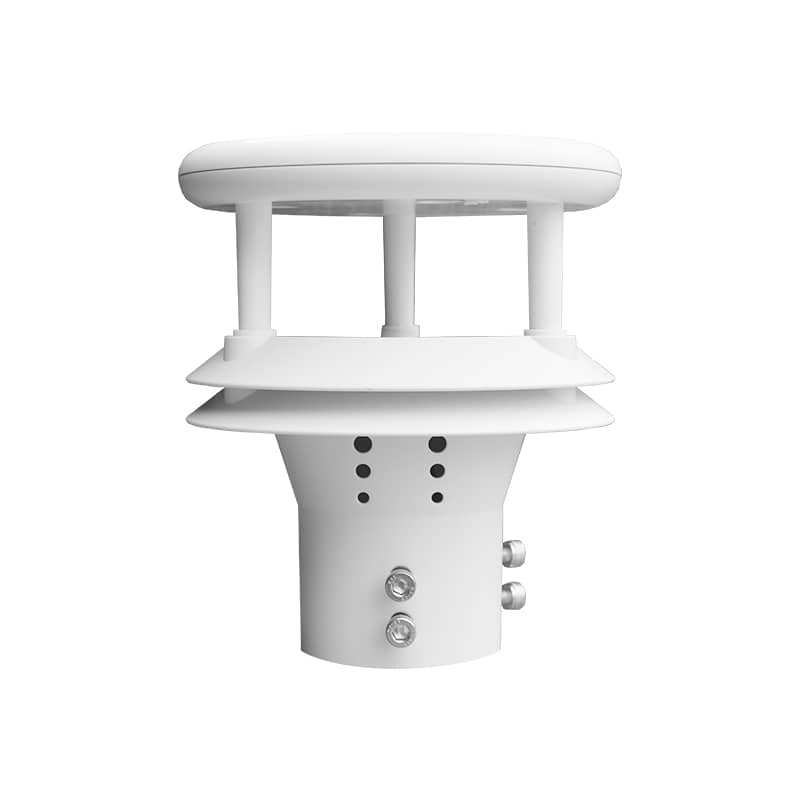Tianyi Sensor IOT Technology Co., Ltd
Sales Manager:Ms. Emily Wang
Cel,Whatsapp,Wechat:+86 15898932201
Email:info@fengtutec.com
Add:No. 155 Optoelectronic Industry Accelerator, Gaoxin District, Weifang, Shandong, China

Sales Manager:Ms. Emily Wang
Cel,Whatsapp,Wechat:+86 15898932201
Email:info@fengtutec.com
Add:No. 155 Optoelectronic Industry Accelerator, Gaoxin District, Weifang, Shandong, China
time:2025-11-18 11:30:16 source:Weather Station viewed:3 time
The Wind Sensor employs the time-of-flight measurement principle, accurately calculating wind speed and direction by detecting changes in the speed of ultrasonic waves propagating in the air.
The Wind Sensor is a professional meteorological instrument based on the ultrasonic time-of-flight method. Its core measurement principle utilizes the time difference in the propagation of ultrasonic pulses in three-dimensional space to calculate wind speed and direction. The sensor emits ultrasonic waves and accurately measures their propagation time in the air. Based on the time difference between the windward and headwind directions, precise wind speed and direction data are obtained through mathematical calculations.
In terms of structural design, the Wind Sensor adopts a highly integrated miniature fully digital sensor design. The device is compact, lightweight, and has a robust and durable overall structure. Due to its fully enclosed design, there are no moving mechanical parts, avoiding the bearing wear and freezing jamming problems found in traditional cup anemometers. This design without moving parts means the device requires virtually no daily maintenance and can operate stably for extended periods under harsh weather conditions.
The Wind Sensor has significant advantages in measurement performance. The measurement range typically covers wind speeds of 0-60 m/s and wind directions of 0-360 degrees, with a short response time capable of capturing instantaneous wind speed changes. These characteristics make it particularly suitable for monitoring rapidly changing meteorological phenomena such as turbulence and gusts.
In terms of applications, this equipment is widely used in meteorological observation, environmental monitoring, and industrial measurement. In aviation, it is used for airport runway wind field monitoring to ensure aircraft takeoff and landing safety. In marine applications, it is installed on ships and offshore platforms to provide real-time wind field data. In agricultural meteorology, it provides field microclimate monitoring for precision agriculture. Furthermore, it plays an important role in wind farm site selection, bridge wind load monitoring, and urban environmental monitoring.
The equipment is relatively easy to install and use. It is typically mounted on a bracket to ensure the sensor is in an open location, avoiding the influence of surrounding obstacles on the measurement results. Most models support multiple communication protocols, allowing for easy integration with existing data acquisition systems. Some models also feature self-heating capabilities, ensuring normal operation in low-temperature and humid environments.
With technological advancements, modern Wind Sensor systems have continuously improved in signal processing, anti-interference capabilities, and environmental adaptability. Newer models show significant improvements in power consumption control, data transmission stability, and reliability in extreme environments, meeting the specific needs of various application scenarios.
As an advanced meteorological measurement device, Wind Sensor continues to play a vital role in meteorological monitoring, industrial applications, and scientific research due to its high precision, high reliability, and low maintenance, providing accurate and reliable wind field observation data to related industries.

The Weather Station Monitoring System is an important component of the overall environmental monitoring system. It is mainly used for real-time and continuous monitoring and data collection of various meteorological elements and related pollutants in the atmospheric environment, providing scientific...
Laser methane telemeter, leveraging laser technology, is used to detect the concentration of methane gas in the environment and has been widely applied in natural gas stations, the petroleum and petrochemical industry, the metallurgical industry, the power industry and other places.According to diff...
The Nine - element PV Weather Station is a meteorological monitoring device specifically designed for photovoltaic power generation systems.Distributed photovoltaic power generation is mainly for self - consumption by users on the user side, and the surplus electricity is fed into the grid. The norm...
In today's intertwined context of agricultural modernization and ecological conservation needs, dynamic changes in soil moisture directly impact crop growth, water resource utilization, and ecosystem stability. Automatic Soil Monitoring Systems are becoming the link connecting farmland managemen...